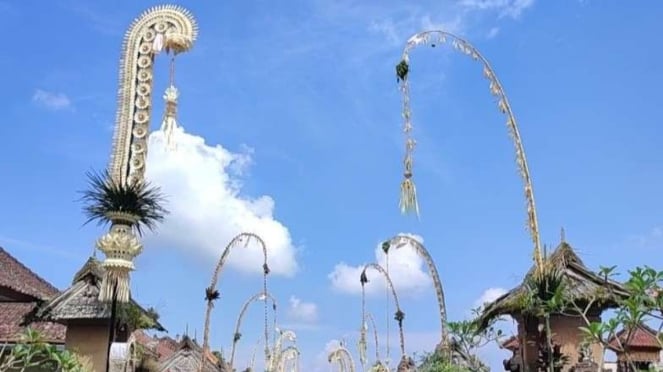Government Uses 2,500 Penjor to Welcome the G20 Summit Delegates
- VIVA.co.id/ Maha Liarosh (Bali)
VIVA – In welcoming the G20 Summit delegates to the venue of a prestigious world event, the government will use 2,500 penjor with each penjor being 6-7 meters high. The government spent IDR 3.5 billion for the manufacture and installation of thousands of penjor.
The Chairman of Paruman Walaka PHDI Bali, Prof. Dr. I Gusti Ngurah Sudiana, explained that in Bali there are two types of penjor, namely penjor which is installed in connection with traditional ceremonies such as during Galungan and Kuningan and Penjor pepenjoran.
Penjor pepenjoran can be installed at any time, not necessarily related to traditional ceremony or holiday. Penjor is also an expression of gratitude and offering. Therefore, it is important to install the penjor in welcoming the G20 Summit delegates.
Penjor dipasang di jalan-jalan di Bali.
- VIVA.co.id/ Maha Liarosh (Bali)
"The symbol of penjor, which actually does mean an offering and gratitude, can be one of the reminders to the participants and delegates of the G20 Summit," Sudiana remarked on November 4, 2022.
The intermediate type of penjor will be installed on the highway. While the main penjor will be installed at the G20 Summit venue, at The Apurva Kempinski Hotel as the meeting location, and Tahura Mangrove Area as the location of the food-drink stalls.
What is Penjor?
Penjor is a complete bamboo stick decorated with specially shaped young coconut leaves. At first glance, its shape resembles a pennant. Usually, the penjor is made as high as 10 meters, which describes the highest mountain.
Penjor dipasang di jalan-jalan di Bali.
- VIVA.co.id/ Maha Liarosh (Bali)
Balinese Hindus believe that Mount Agung is the home of Hyang Bathara Putra Jaya along with the Gods and ancestors. The mountain is the palace of God with its various manifestations. Penjor symbolizes gratitude for the crops that He bestows. In this case, Mount Agung is the giver of that prosperity.
Recorded in the Jayakasunu lontar, penjor symbolizes Mount Agung. Furthermore, the lontar Basuki Stawa states that the mountain (Giri) is the king's dragon, which is none other than Naga Basuki.
In mythology, the base of Mount Agung is known as the linggih of Sang Hyang Naga Basuki. From the word, Basuki comes the name Besakih. Naga Basuki, in Basuki Stawa, is depicted with his tail at the top of the mountain and his head in the sea.
The image is a symbol that the mountain is a water storage reservoir which then becomes a river. Finally, it retrieves into the sea.





























